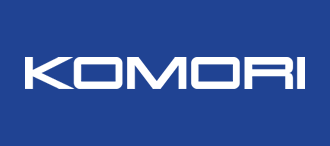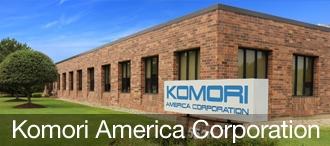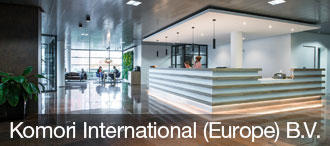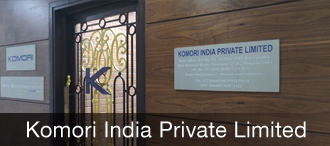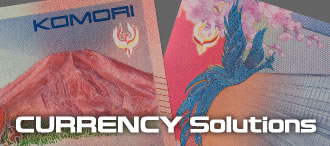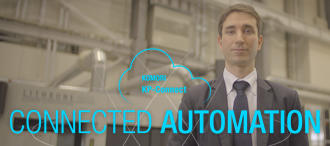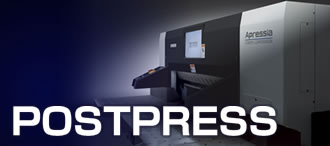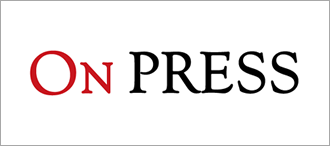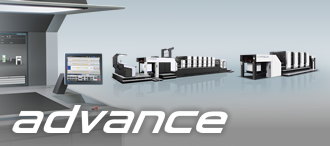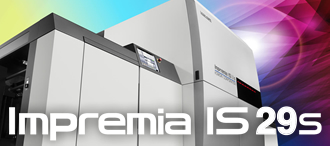Introduction of Coater-equipped Lithrone G40 advance: Complete Quality Control and Productivity Improvement for Package Printing
Japan, Niwa Printing Co., Ltd. | Lithrone G40 advance [GL-640A+C]
10 July 2024
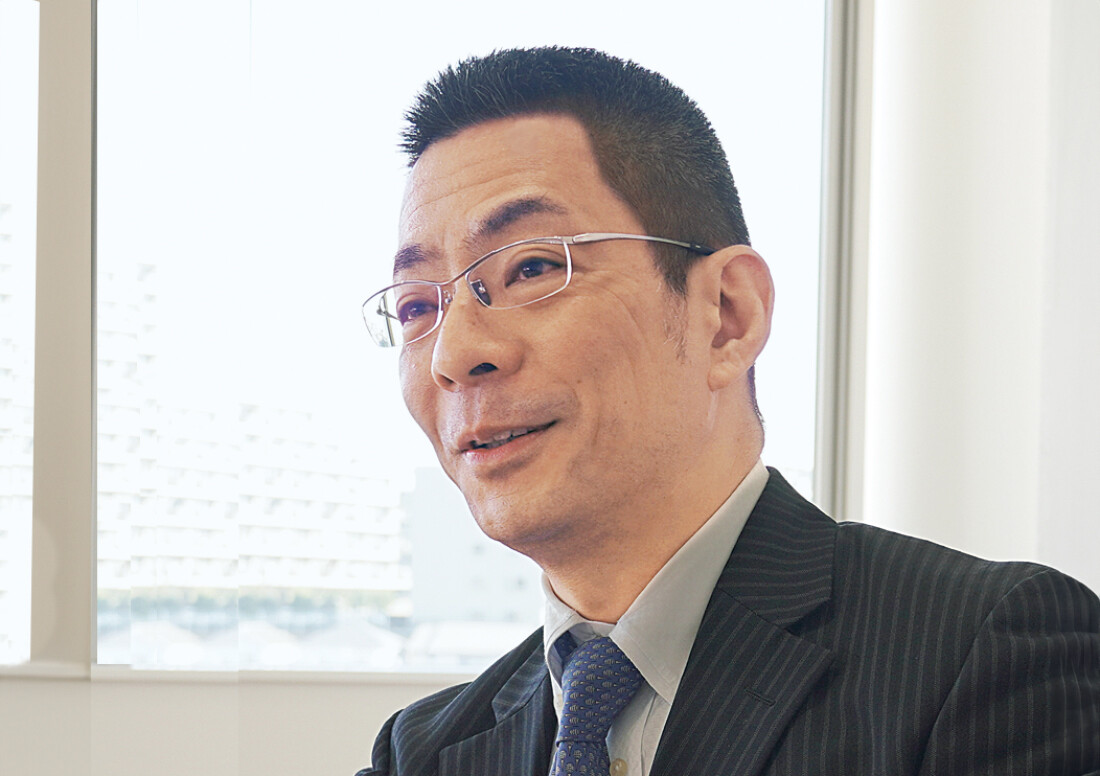
Since its establishment in 1946, Niwa Printing Co., Ltd. has worked with four major plate printing methods: letterpress, intaglio, offset, and screen printing, building technology specialized for cosmetic labels and packaging. In October 2021, the company consolidated its factories in Shinagawa and Yokohama in a new plant in Isehara. They introduced the Lithrone G40 advance with coater (a six-color 40-inch sheetfed offset printing press), which can handle both multi-color and environmentally friendly printing. We asked President Tomohiro Horino, Plant Manager and Quality Assurance Department Manager Osamu Usui, Manufacturing Department Manager Shuzo Nishimori, and Offset Section Chief of Manufacturing Section 1 Ryota Kudo about the background and effects of this introduction.
Tomohiro Horino, President
Expectations for the versatile performance of the Lithrone G40 advance
To realize the dream of becoming a centennial company, Niwa Printing launched a project to build a new plant about five years ago. The newly completed Isehara Plant introduced new machines for all processes, selecting the Lithrone G40 advance with coater for the press and focusing on increasing demand for color printing and reducing plastic in the future.
President Horino explains the reason for the selection: "The print quality of offset printing, which is our top process, greatly influences the quality of our production, which involves many secondary processes. Therefore, we introduced the Lithrone G40 advance, which provides superlative performance with regard to makeready time, register accuracy, and color reproducibility. As society moves away from plastic, we have been exploring surface processing alternatives to PET, PP, and matte finishes, reproducing them with screen printing. To improve productivity with offset printing, we decided to introduce new machines, and this was very effective. Our customers have already adopted this as a measure to reduce plastic." Plant Manager Usui, who has been involved since the project's inception, added, "Previously, a four-color machine was sufficient for most jobs, but with the addition of special colors to process colors, a six-or-more color press was desirable." He explained the background to selecting a six-color machine after detailed discussions with Komori, considering the changes in production needs.
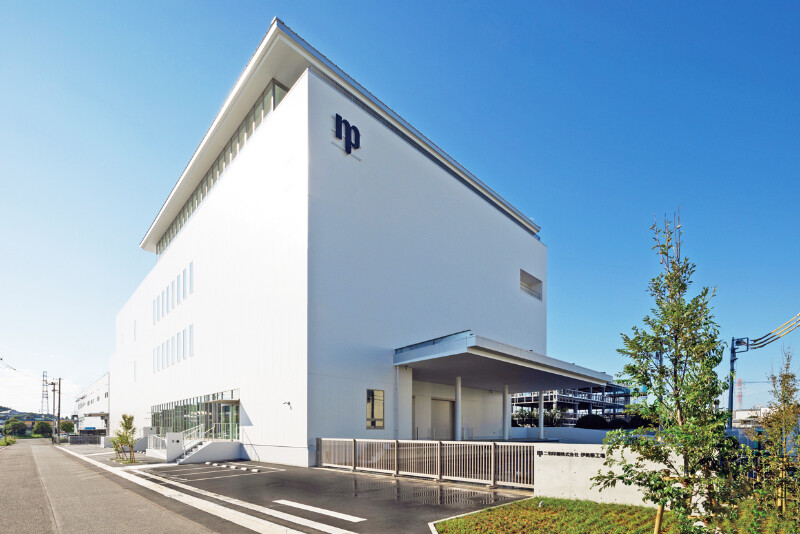
New Isehara Plant
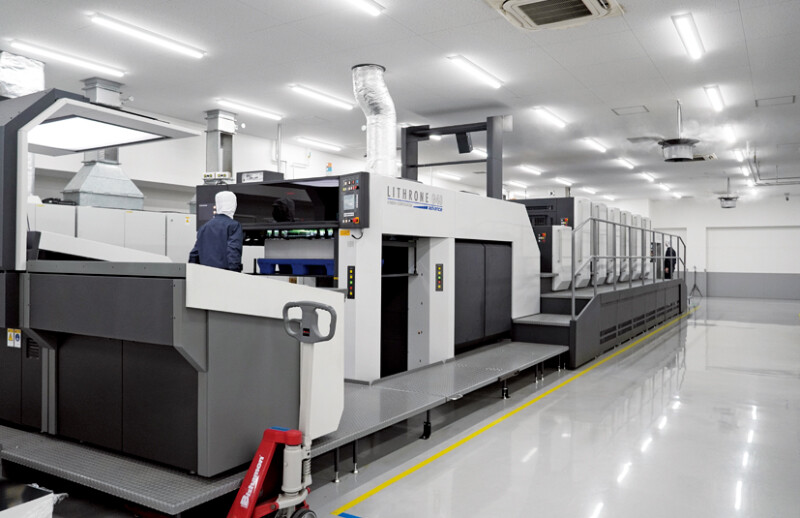
The Isehara Plant has established completely different entry criteria compared to previous plants. "Contamination such as hair has been completely eliminated, leading to a dramatic stabilization of quality," says President Horino.
Improved quality and productivity with multiple functions
The company handles many jobs requiring special colors and full-tone printing, and with conventional machines the printing speed was lowered due to consideration of register accuracy and drying.
Mr. Horino discusses the effects after introducing the Lithrone G40 advance: "The register accuracy is excellent, aligning almost right away. The more secondary processes like foil stamping and embossing increase, the more likely misalignment occurs, but the new machine makes it is easier to match register, and it smoothly handles secondary processes even with multi-imposition printing." Additionally, the company adopted the extended delivery specification considering the drying (curing) of ink immediately after printing. Currently, even with the printing speed set at 1.5 times faster than before, register accuracy is maintained without drying defects. Furthermore, he says, "Printing defects leading to complaints, such as hickeys and ghosts, have significantly decreased. Equipping the press with inspection devices (PDC-SX, PQA-S) has provided operators with a sense of security."

The average age of the site staff is about 27.
Plant Manager Usui has high expectations for growth, saying, "Employees who joined as new graduates are settling in and working hard. In a few years, they will likely be able to lead the company."
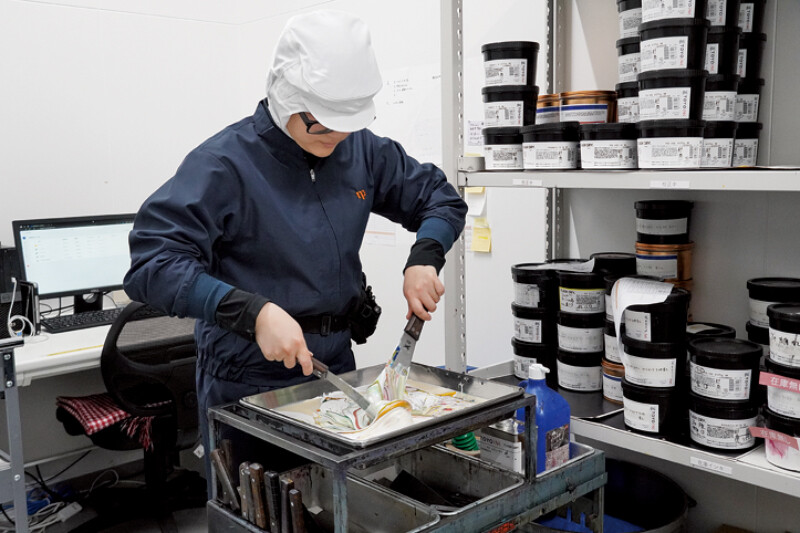
There are many female employees who are active at the site, taking charge of color matching and other tasks.
Mr. Usui states, "For jobs that require only offset printing, the inspection devices have made it possible to omit the blank inspection process, so we proceed without any inspection and without complaints." He highlighted the simultaneous achievement of quality improvement and labor-saving.
Manufacturing Department Manager Nishimori praises the new machine: "We use many special colors and for changeover, we perform roller cleaning, fountain changing, and color changes. Our previous press took an hour with four colors, but the new machine completes the process with six colors and a coater in nearly the same time. Full-APC reduces plate-changing time by about half, significantly reducing makeready time. For color adjustments, the number of times necessary from ink feeding to print start-up has significantly decreased due to preinking, and waste paper has been halved compared to before. There are fewer defects, and almost no surface irregularities within the sheet." He added, "Even when we raise the speed, there is no register error or color tone inconsistencies, enabling printing at a constant level from start to finish. It's a world-class machine."
Regarding feeder and delivery precision, he mentions, "Our company uses a wide variety of papers. We had difficulties with the previous machine, but the new press can print different papers, such as general paper, metallized paper, foam paper, black paper, PET, and film, and paper thicknesses ranging from 0.1 to 0.5mm, with only air adjustment. Sheet alignment in the delivery is excellent, and work can be quickly moved to the next process, reducing the burden on the operator." Offset Section Chief Kudo also explains, "Compared to the previous press, the new machine has more suction points for the first and second suctions, and the feeder has an exceptionally stable paper flow, almost eliminating issues like paper warping and double feeding. The number of air blowers has increased, making paper feeding smoother."
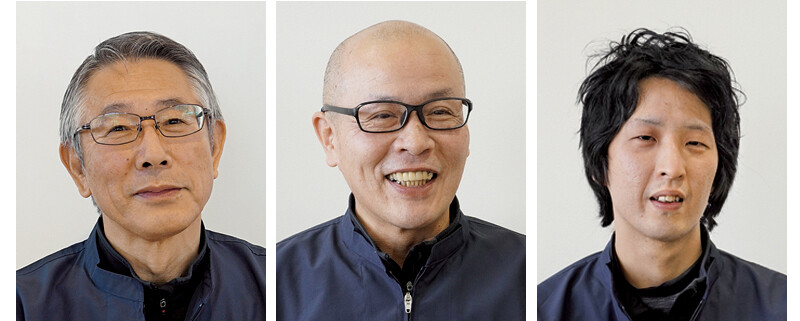
From left: Osamu Usui, Plant Manager and Quality Assurance Department Manager of Isehara Plant; Shuzo Nishimori, Manufacturing Department Manager; Ryota Kudo, Offset Section Chief of Manufacturing Section 1
"It is important to reduce changeovers and speed up the startup process. The new machine has significantly improved efficiency."
Osamu Usui, Plant Manager and Quality Assurance Department Manager of Isehara Plant
"Cosmetics packaging demands extremely high quality. After considering the delicate color reproducibility of special inks, we chose the Lithrone G40 advance."
Shuzo Nishimori, Manufacturing Department Manager
"We fully utilize color control, automatic register feedback, and automatic color tone adjustment feedback to achieve stable production."
Ryota Kudo, Offset Section Chief of Manufacturing Section 1
Addressing emerging challenges at the beginning of new plant operation with KGC support
Immediately after the start of operation at the new plant, productivity temporarily declined due to a major replacement of employees following the relocation. However, about a year of improvement support from KGC (Komori Graphic Technology Center) was a catalyst for productivity improvement. President Horino says, "In addition to printing knowledge, by re-recognizing the importance of effective 5S activities and daily maintenance, operator awareness changed. Printing quality improved, and productivity increased by about 1.3 times since the relocation." Offset Section Chief Kudo, who is the chief operator, also shares, "By learning maintenance and how to use PQA-S and PDC-SX, we have been able to maintain quality and gained confidence."
Finally, President Horino expresses his vision and thoughts for the future: "I believe packaging gives consumers dreams and hopes. We want to continue passing on our technology, producing craftsmen who can create printed products that evoke Kando when seen and touched. Printing technology worldwide is rapidly evolving. We feel the need to deliver printed products that provide 'the pleasure of paper felt with all the senses' as added value, creating an emotional impact globally."

